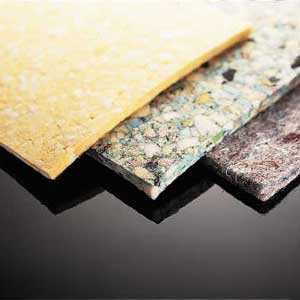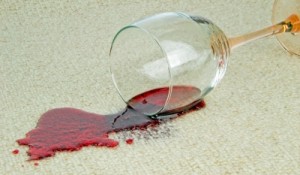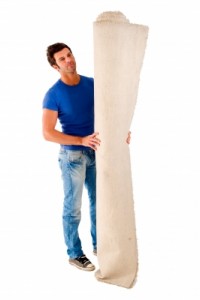I had a customer ask me about carpet padding the other day and I found this information very helpful. 
Today’s carpets require special padding unlike the carpets of even ten years ago. If you do not follow the manufacturer’s padding guidelines, you will void your carpet warranty. It is up to the professional carpet dealer to inform you of the correct padding for each particular need. Remember the most expensive pad you will ever get is the FREE PAD offered by many floor covering stores. Types of Padding
Waffle Rubber: This type of padding is still being used today but often improperly. The waffle part of the padding gives it a thickness that is mostly air, and as a result, any of this type of padding rated less than 90 ounces is still too soft for today’s plastic backed carpets. Also, despite claims to the contrary, the rubber used to make these paddings is held together with clay type binders that break down with use.
Foam Padding: This type of padding is made from urethane foam and is available in different densities and thickness. Generally this type of pad is referred to “prime foam”, but, regardless of the thickness, is not recommended for heavy traffic of any kind. All that air under the carpet just causes the carpet to move up and down so much that the backing soon breaks down. Some enhancements have been tried like loading the foam with binders to make it heavier, or compressing the cells. However, both of these methods leave foam that still does not support the carpet like other types of padding.
Rebond: This type of padding is used most often by the floor covering industry. It is made from of scraps of the high density foams used in furniture making that are bonded together. Rebond padding comes in various thicknesses and densities. The density is rated at so many pounds per cubic foot. For example, a 5lb rebond pad would weigh 5lbs per cubic foot.
Slab Rubber: For the more luxury and long wear one could use 100 ounce 19lb density slab rubber padding. Unlike the waffle rubber padding, slab rubber does not contain big ripples of air. This pad feels much like 7lb rebond, but will resist furniture indentation and crushing for a much longer period of time. I recommend this pad for the highest of traffic areas.
Fiber: These pads are used when one wants to limit the movement in a piece of carpet. This pad can be made from jute, or hair mixed with jute, or synthetic fiber, or recycled textile fiber. Most often these pads are used under area rugs, under commercial carpets, and under some Berber carpets.
Frothed Foam: The ultimate padding on the market is Frothed Foam. This pad is a super dense urethane and is made 7/16 inch thick. It is extremely durable, can be used under all carpets, will reduce furniture indentations, and prolong the life of your carpet better than any rebond, fiber, waffle rubber or prime foam. It cost about the same as a good slab rubber padding and will last longer.

 Berber Carpets
Berber Carpets
